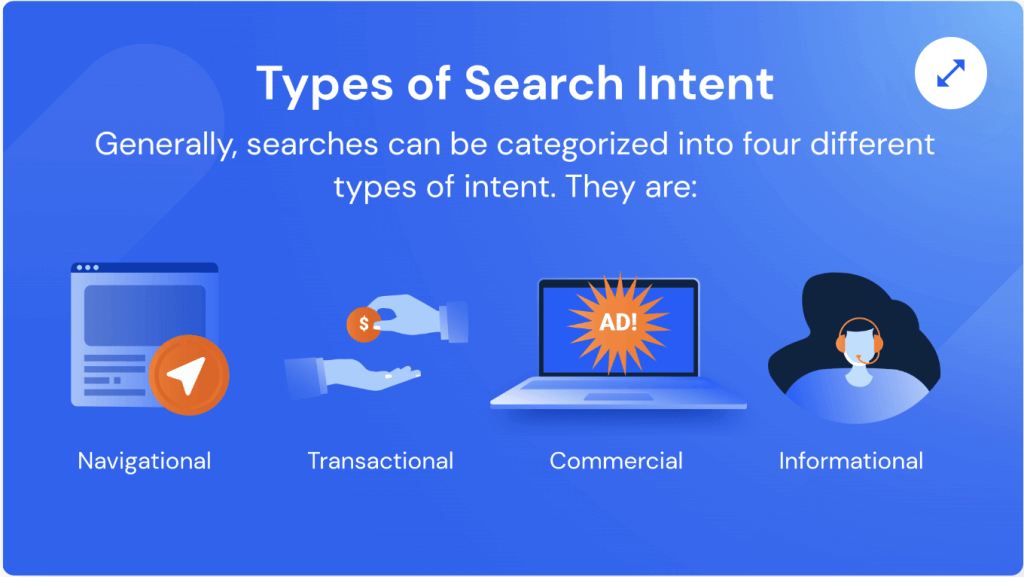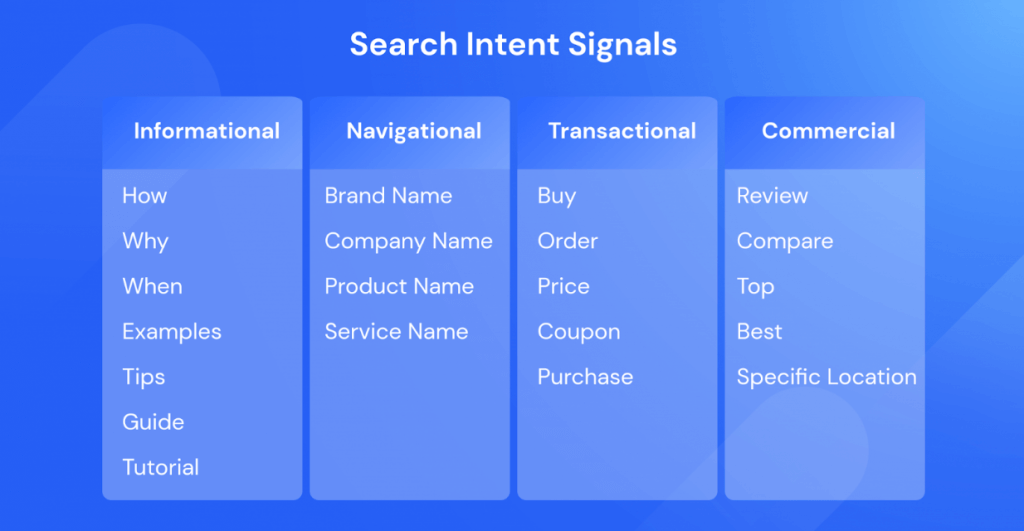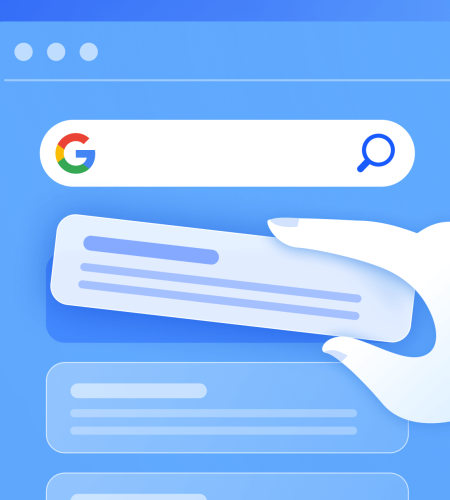As a business owner or content creator, SEO is the cheapest and most cost-efficient way to drive traffic to your website. You can appear right in front of your target audience when they are searching for your products/services. Isn’t it amazing?
Therefore, understanding search intent is crucial to know which keywords to pursue in order to attract the right users. SEO takes ongoing efforts months over months, and choosing the wrong keywords could be a waste of time and resources.
In this article, we will explain to you why Search Intent matters for SEO and how to choose the right keywords to capitalize on organic traffic and drive high-quality traffic that’s ready to buy or engage with your content.
What is Search Intent?
Search Intent (= user intent) is the term used to describe the user’s goal when performing a query on a search engine like Google. To put it simply, each user has a specific goal in mind when browsing the internet. The main goal of search engines is to understand this intent and display relevant content that will match the user’s query.
Google has put a lot of effort in the last years to create its algorithms in order to improve the relevancy of the search results and match the search intent. However, you also need on your side to select the right keywords and write high-quality contents to feed the algorithm and appear in relevant search queries.
4 Types of Search Intent
As stated earlier, each user has a different intent when searching on Google. They might be looking to book a hotel room, searching for a gym workout, or maybe checking next week’s weather.
They all have different motivations and expect different types of results. Your job is to understand those motivations (=search intent) to create content that will provide them with what they are looking for.
They are 4 main types of intent that we can categorize when it comes to SEO:

1. Informational Intent
This is when users are seeking knowledge about a specific thing. They are looking for information, explanations, tutorials, etc. This is the first step of what we call the marketing funnel. Creating informational content can help you capture users and build trust in the early stages of their research.
Let’s say you have a travel agency website. You can use your blog section to create informational content such as “Top 10 Places to Visit in Fes”. You will provide value and establish credibility with the users so they can potentially book their accommodation through your agency later on in the funnel.
2. Navigational Intent
This is when users are looking for a specific website or business name. They already know what they are looking for and are using the search engine as a shortcut to get access to the desired URL.
For instance, if you own a hotel named “Riad Fes”, you can optimize your on-site SEO by including your brand name in the meta tags, URL, HTML headers, etc. The goal here is to make your website rank as high as possible in the SERP when someone is searching for your business.
3. Commercial Intent
This is typically what we call the investigation phase. Users are comparing different options and alternatives before making their purchase. They are looking for reviews, pricing, comparisons, etc.
Your job is to create content that will address this commercial intent and convince them that your product/service is the right choice. There is no specific format for that style of content. You have to be creative and understand your industry.
For example, if you have a software company, you can create long-form blog posts (e.g. Your Product VS Competitor) where you compare your product with another one from a competitor. Hubspot does this perfectly (See picture below).

4. Transactional Intent
This is the one with the highest-quality users. At this stage, they are ready to buy or engage in a specific action. Your job is to optimize your content to rank higher in the SERP and capture the users.
There are 2 subtypes of keywords at this stage. They either search for your brand name (e.g. Nike) or a descriptive keyword of what they want to buy (e.g. Buy Black Leather Wallet). Your landing page should address this transactional intent to increase your likelihood to convert.
Search Intent in Your SEO Strategy
Now that you have a clear idea of the different types of search intent, you need to sit down and ask yourself:
Does my current strategy take into account the user’s intent?
Your goal is to build an SEO strategy that will address each one of those intents, or at least the ones that will provide the most value for your business.

Let’s take our previous example about the travel agency operating in Fes. We will take this example to show you why search intent matters for SEO and how to build a strategy based on that.
As a business owner, you have a large selection of keywords that you can choose to optimize for. But this does not means you should go through all of them. They may not have the same value for your business.
If your goal is to generate leads for your travel tour services in Fes, there is a limited amount of keywords with commercial or transactional intent. Hence, you need to have a holistic view of your marketing funnel and supplement your strategy with navigational content that will potentially transform visitors into future clients.
For the travel agency example, you can target high-intent keywords such as “travel tours fes” but as we said, the search volume might be low and not enough to justify all these SEO efforts.
Therefore, you need to create educational content and blog posts to educate future customers and raise awareness about your services. Those informational keywords usually have a larger search volume than the commercial ones, and allow you to scale your SEO strategy to the next level.
Conclusion
Understanding search intent is crucial for anyone who is building an SEO strategy. You have learned in this article the different search intents and how to build your strategy according to them. This is your first step in mastering the art of SEO.
Need help with your SEO strategy? Feel free to reach out to the Howdy Code Team to get your action plan.


Comments